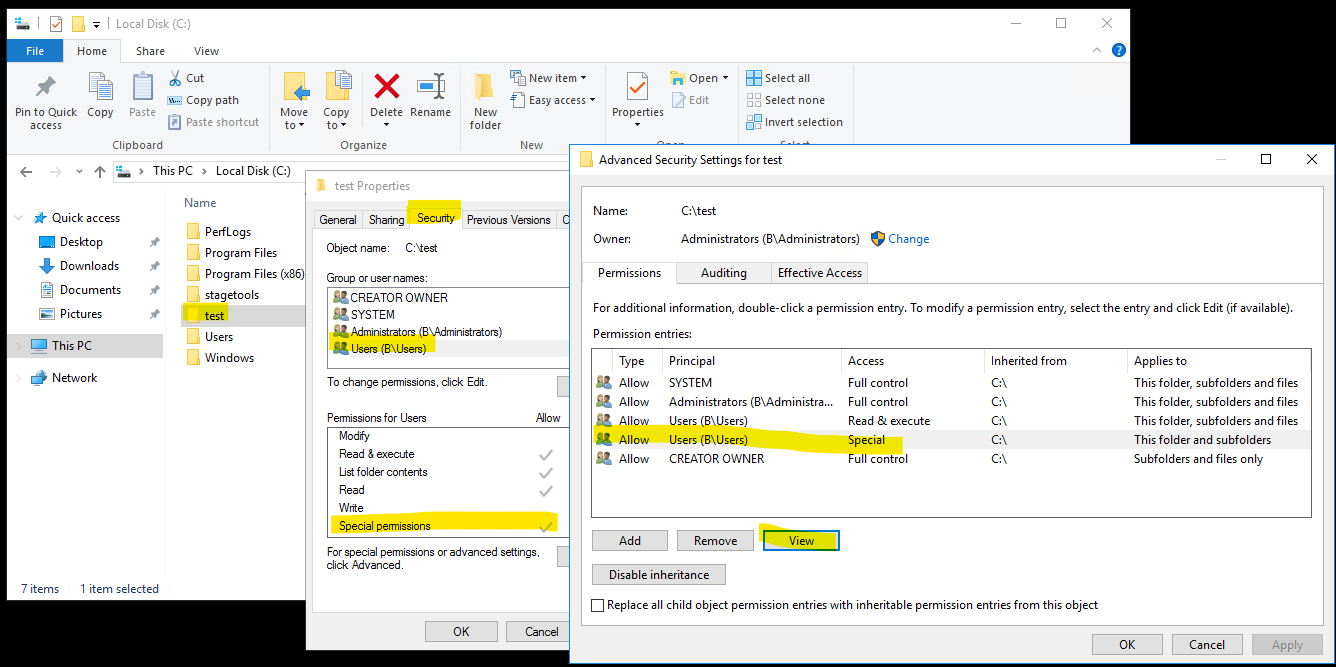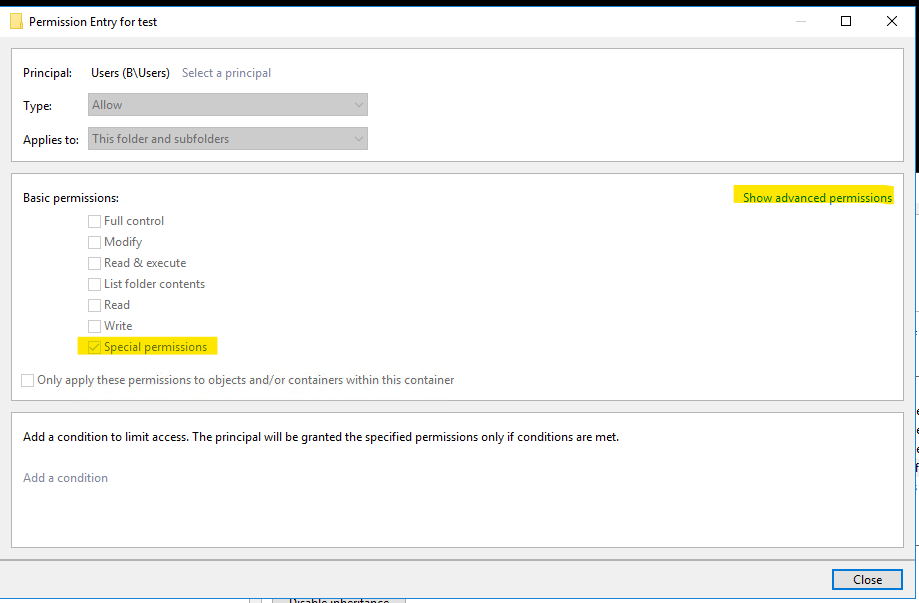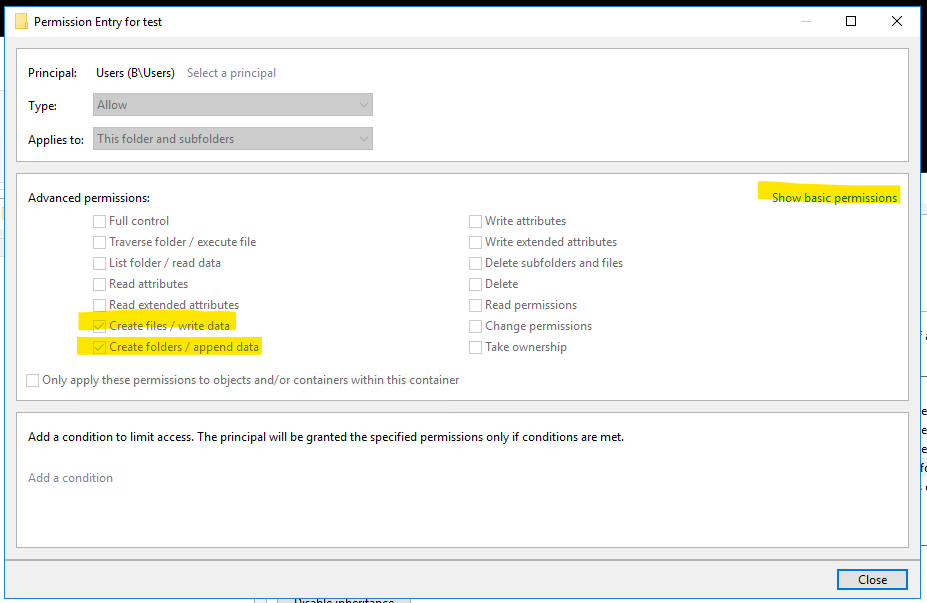
Hello AdrianC-7801,
Thank you for posting here.
NTFS special permissions may contain one or more different permissions.
For example:
1.The "Users" group has "Special permissions", we can click this entry and click "View".

2.Through "Show Advanced permissions", we can see "Special permissions".

3.Please click "Show Advanced permissions", then you will see "Show basic permissions", we can see "Create files /write data" and "Create folders /append data", here the two permissions ("Create files /write data" and "Create folders /append data") are "Special permissions".

You can try to check the Special permission in your case and add the Special permission manually to see if it helps.
Hope the information is helpful. If anything is unclear, please feel free to let us know.
Best Regards,
Daisy Zhou
============================================
If the Answer is helpful, please click "Accept Answer" and upvote it.